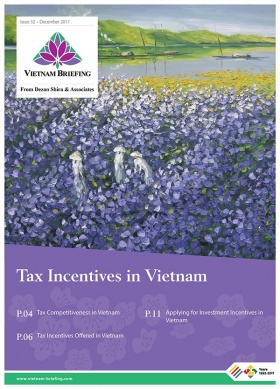Vietnam – Italy : Trade and Investment Relations
The year 2018 marks the 45th anniversary of Vietnam- Italy diplomatic relations. Since 2013, when a strategic partnership was established between both the countries, bilateral trade and investments have witnessed a significant growth. Vietnam’s strategic location, labor cost, economic growth, government incentives, domestic market, and participation in numerous free trade agreements including Vietnam-EU Free Trade Agreement (EVFTA), which will come into effect in 2019, has driven investments and bilateral trade between both the nations.
Bilateral trade
Vietnam is currently the biggest trade partner of Italy in ASEAN, while Italy is the fourth largest in the EU. Trade balance between both the countries continues to be in Vietnam’s favor.
Exports
Vietnamese exports to Italy increased from US$1.9 billion in 2012 to US$3.3 billion in 2016. However, exports in 2017 reduced compared to 2016 to US$2.7 billion.
In the first five months of 2018, exports to Italy reduced by almost 37 percent to US$927.7 million, compared to the same period in 2017. The 37 percent decline, was mostly due to two products, telephones and computers. Telephone exports in the first five months of 2018 were only US$75.3 million, a huge decline from US$618 million reported for the same period last year. Computer exports reduced from US$107 million in the first five months of 2017 to US$40.5 million in 2018.
Major exports to Italy includes phones and components, electronics, textiles and garments, footwear, coffee, and machinery.
Imports
Imports from Italy increased from US$972 million in 2012 to US$1.5 billion in 2015 to US$1.7 billion last year. Major imports included equipment for the textile, leather, footwear, food processing, packaging, and plastic industries. Other imports included wood products, pharmaceuticals, and machinery.
FDI
Italy ranks 31st among 128 countries and 9th among the EU nations that have invested in Vietnam. Total registered investments increased from US$276 million in 2012 to US$357 million in 2015 to US$388 million last year. Majority of the investments are wholly-owned by Italian companies, while the rest are joint ventures with Vietnamese firms.
Locations
Italian firms have invested in 22 of the 63 provinces and cities in Vietnam with Hanoi, Ho Chi Minh City, and Vinh Phuc being the major destinations.
Major Italian firms
Majority of the investments are in the manufacturing, infrastructure, pharmaceuticals, transportation, metal products, and food processing projects. Major Italian companies in Vietnam include Perfetti (confectionery and gum), Segafredo Zanetti (coffee), Mapei (adhesives and sealants), Ghella (construction), Menarini (pharmaceuticals), Medlac (pharmaceuticals), Leonardo (transportation), Bonfiglioli (industrial machinery), and Piaggio (transportation).
Opportunities
While traditional industries such as footwear, textiles, consumer goods, and manufacturing remain the major attractors of FDI, emerging sectors such as infrastructure, renewable energies, machinery, and interior design products are also being promoted to attract Italian investors.
Infrastructure
Infrastructure projects, which are currently a priority for the government, offers an opportunity for Italian companies involved in the construction of roads, housing, electricity distribution networks, airports, and ports. These projects cannot be fulfilled only by domestic investors or government funding and require foreign capital to meet the demand.
Renewable energy
By 2020 and 2030, energy demand in Vietnam is predicted to grow by over 10 and eight percent respectively. In addition, electricity consumption is predicted to increase fourfold by 2030 compared to 2014. To meet the growing demand, the government is focusing on renewable energy and waste management projects. This opens up opportunities for Italian firms with expertise in solar, wind, hydropower, and waste to energy technologies.
Machinery
In the manufacturing sector, the growing demand for modern machinery and equipment in the leather, textiles, footwear, rubber processing, and food processing industries offers an opportunity for Italian companies. The Italy-Vietnam Textile Technology Centre in Ho Chi Minh City, which opened last year is already providing training to Vietnamese workers and engineers in Italian machinery and equipment.
Interior décor
In the last three years, interior décor imports into Vietnam have grown at an annual average of 33 percent. Italy, which ranks first in Europe and third globally among the top exporters to Vietnam should focus on further developing their distribution network in the country to increase their market share in this emerging growth sector.
Going forward, once the EVFTA comes into effect, trade and investments are predicted to witness faster growth. Vietnam, with its favorable location, government policies, and regional connectivity will continue to be a priority for Italian businesses in the region as it serves as a strategic gateway for Southeast Asia.
Vietnam Briefing is produced by Dezan Shira & Associates. The firm assists foreign investors throughout Asia and maintains offices in China, Hong Kong, Indonesia, Singapore, Vietnam, India, and Russia.
Please contact vietnam@dezshira.com or visit our website at www.dezshira.com.
- Previous Article L’ecosistema delle start-up in Vietnam
- Next Article Vietnam’s Snack Foods Market: Knowing Your Consumers































